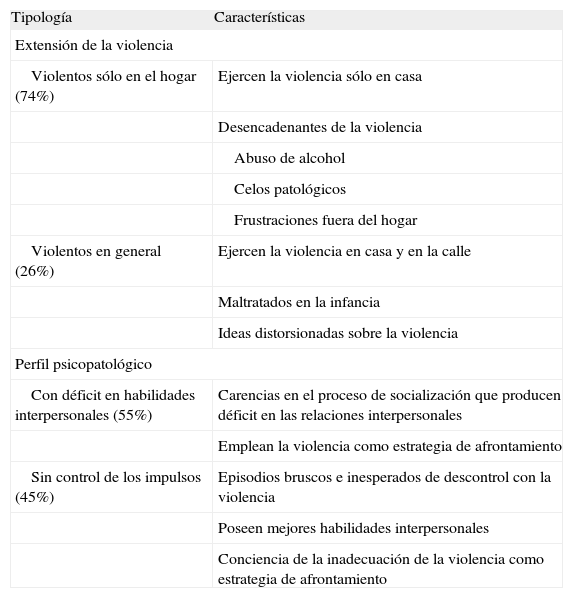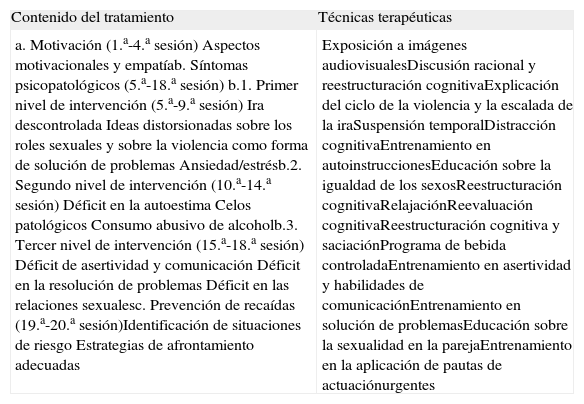Los objetivos de este artículo han sido analizar las características psicopatológicas y de personalidad que presentan los hombres violentos contra la pareja, así como detectar sus principales distorsiones cognitivas, y establecer una tipología de agresores. Asimismo, se describe un programa de intervención cognitivo-conductual, aplicado en un formato individual de 20 sesiones en un marco comunitario, que se ha llevado a cabo durante 10 años. La tasa de éxitos fue del 88% en los sujetos que completaban el tratamiento. A pesar de la pérdida de pacientes en los seguimientos (un 46% a los 12 meses), los resultados se mantuvieron en los pacientes contactados (un 53% a los 12 meses), con una disminución considerable de las recaídas. Sin embargo, la tasa de rechazos y abandonos del tratamiento fue más bien alta. Se comentan las implicaciones de este estudio para la práctica clínica, la toma de decisiones políticas y las líneas de investigación futuras.
The aims of this paper were to analyze the personality and psychopathological characteristics of male batterers, together with the most important cognitive distortions of their minds, and to establish a typology of men who engage in intimate partner violence. Likewise, an individual 20 sessions cognitive-behavioral programme in the treatment of male batterers after 10 years implementation in a community setting is described. The success rate was 88% in those who completed the treatment. In spite of losing patients in the follow-ups (46% at the end of twelve months), the results were maintained in the patients contacted at follow-up (53% in the 12-month-follow-up), with a high impact on reducing recurrences. However, the rate of refusals and drop-outs of the treatment was fairly high. Implications of this study for clinical practice, policy decisions and future research in this field are commented upon.
Artículo
Comprando el artículo el PDF del mismo podrá ser descargado
Precio 19,34 €
Comprar ahora







